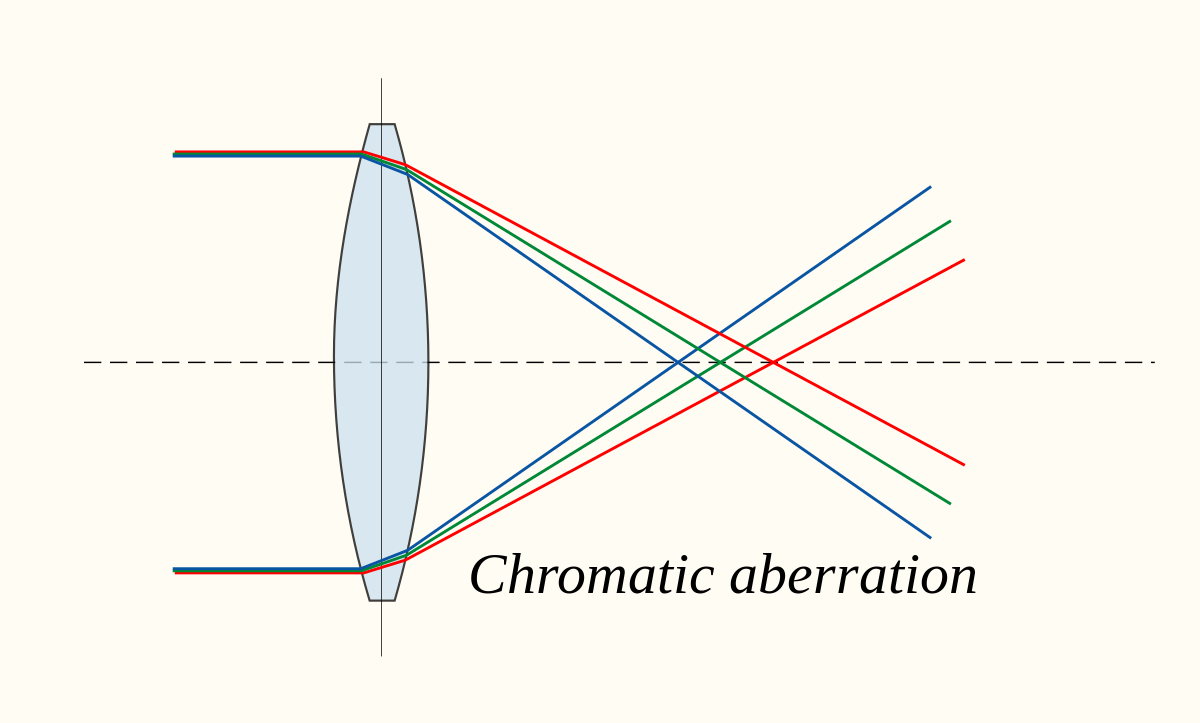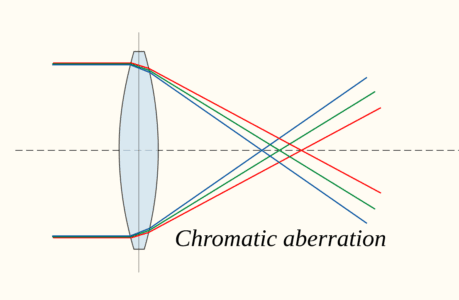Introduction
Astronomy, the study of celestial bodies and the cosmos, has always been a source of wonder and intrigue for humanity. Whether it’s gazing at distant galaxies, observing nebulae, or tracking the movements of planets, telescopes have been indispensable tools for astronomers. However, these powerful instruments are not without their challenges. One of the most intriguing optical phenomena that can affect the clarity of astronomical observations is chromatic aberration. In this article, we will delve deep into the world of chromatic aberration, exploring its causes, effects, and the impact it has on astronomical telescopes.
Section 1: The Basics of Chromatic Aberration
What is Chromatic Aberration?
Chromatic aberration, often referred to as “color fringing,” is a phenomenon that occurs in optical systems, including telescopes. It results in the separation of light into its constituent colors, similar to the effect observed in a prism. This separation is due to the different wavelengths of light bending by varying amounts as they pass through a lens or other optical element. The result is a blurred or distorted image with colored fringes around high-contrast objects.
The Role of Dispersion
Chromatic aberration is primarily caused by dispersion, which is the property of optical materials to refract or bend different colors of light by different amounts. In simpler terms, dispersion occurs when light of varying colors (or wavelengths) is bent to different degrees as it passes through a lens. This dispersion can lead to the separation of colors, creating the characteristic fringes associated with chromatic aberration.
Chromatic Aberration in a Prism
To better understand chromatic aberration, think of a prism. When white light passes through a prism, it gets separated into a spectrum of colors, from violet to red. Each color is bent by a different angle due to dispersion, resulting in a beautiful display of the rainbow. This dispersion effect is similar to what happens inside optical systems, including telescopes.
Section 2: Causes of Chromatic Aberration
Refraction and Different Wavelengths
Chromatic aberration occurs because different colors of light have different wavelengths. When light passes through an optical element, such as a lens, each color is refracted or bent by an amount that is directly related to its wavelength. Shorter wavelengths, like blue and violet, are bent more than longer wavelengths, such as red and yellow. This discrepancy in bending angles leads to the separation of colors.
Lens Materials and Dispersion
The choice of materials used in telescope lenses plays a crucial role in the severity of chromatic aberration. Different materials exhibit varying levels of dispersion, meaning they bend light of different colors to different degrees. Lens designers must carefully select materials with minimal dispersion to reduce chromatic aberration.
Aperture Size and Chromatic Aberration
The size of the telescope’s aperture, or the diameter of its primary lens or mirror, also influences chromatic aberration. Larger apertures can exacerbate this optical issue because they allow more light of varying wavelengths to enter the optical system. Therefore, designing telescopes with large apertures requires careful consideration to minimize chromatic aberration.
Section 3: Effects of Chromatic Aberration
Blurred Images
One of the most noticeable effects of chromatic aberration is the blurring of images. When you look through a telescope suffering from this aberration, you’ll observe that objects, especially those with high contrast, appear surrounded by colored fringes. This distortion reduces the clarity of the image, making it difficult to discern fine details on celestial objects.
Reduced Contrast
Chromatic aberration can also lead to reduced contrast in astronomical observations. This is because the colored fringes around objects scatter light and reduce the sharpness of the image. As a result, faint details on the surface of planets, the edges of lunar craters, or subtle features in galaxies become harder to see.
Impact on Astrophotography
For astrophotographers, chromatic aberration is a significant concern. When capturing long-exposure images of the night sky, the aberration can become even more pronounced. The presence of color fringes in astrophotographs can mar the overall quality of the image, making post-processing efforts more challenging and time-consuming.
Section 4: Mitigating Chromatic Aberration
Achromatic and Apochromatic Lenses
One common approach to mitigate chromatic aberration is the use of specialized lenses. Achromatic and apochromatic lenses are designed to reduce or eliminate this optical issue. Achromatic lenses are constructed with two or more lens elements made from different types of glass to counteract dispersion. Apochromatic lenses take this a step further, using more advanced optical designs and materials to achieve superior color correction.
Fluorite and Extra-Low Dispersion Glass
Telescope manufacturers often employ fluorite and extra-low dispersion (ED) glass in the construction of their lenses. These materials have properties that minimize dispersion, making them valuable for reducing chromatic aberration. Telescopes equipped with fluorite or ED glass lenses tend to deliver superior image quality, especially for astrophotography.
Refractors and Reflectors
The type of telescope used also impacts chromatic aberration. Refracting telescopes, which use lenses to gather and focus light, are more susceptible to chromatic aberration than reflecting telescopes. Reflectors, which use mirrors, are inherently better at minimizing this aberration, making them a preferred choice for serious astronomers.
Section 5: Real-World Applications
Hubble Space Telescope
Even the most renowned astronomical instruments, like the Hubble Space Telescope, are not immune to chromatic aberration. The Hubble’s optical system includes corrective measures to reduce this phenomenon, such as a combination of lenses and mirrors designed to deliver exceptional image quality. Still, the importance of addressing chromatic aberration remains evident even in space-based telescopes.
Advanced Imaging Techniques
In the world of astrophotography, addressing chromatic aberration is a paramount concern. Advanced techniques, such as image stacking and post-processing software, can help mitigate the effects of this optical issue. By combining multiple images taken through different color filters and aligning them precisely, astrophotographers can produce stunning images with minimal chromatic aberration.
Section 6: The Future of Chromatic Aberration
Advancements in Lens Technology
As technology continues to advance, telescope manufacturers are constantly developing new ways to combat chromatic aberration. Advancements in lens technology, such as the use of exotic materials and innovative optical designs, hold promise for reducing or even eliminating chromatic aberration in future telescopes.
Space-Based Observatories
With space-based observatories like the James Webb Space Telescope (JWST) in operation, astronomers have access to instruments that are far less affected by chromatic aberration. The JWST, for example, utilizes an array of mirrors rather than lenses, significantly reducing the impact of this optical issue. As such telescopes become more common, astronomers can expect improved image quality for their observations.
Section 7: Conclusion
In conclusion, chromatic aberration is a fascinating optical phenomenon that can significantly affect the performance of astronomical telescopes. Understanding its causes, effects, and mitigation strategies is essential for astronomers and stargazers alike. By using specialized lenses, materials with minimal dispersion, and innovative optical designs, the impact of chromatic aberration can be minimized, allowing us to explore the cosmos with greater clarity and precision. As technology continues to advance, the future of astronomical observation holds exciting promise, with even better tools to address this optical challenge. So, the next time you peer through a telescope, remember the intriguing world of chromatic aberration that lies beyond the stars.

